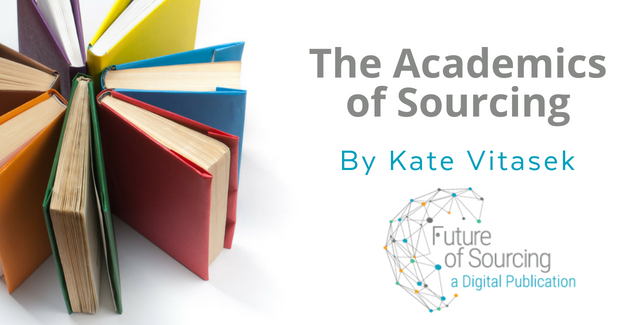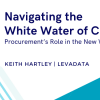Supplier Relationship Management (SRM) is all the rage and for a good reason. Far too many “strategic” contracts have been developed (especially outsourcing contracts) that do not include sound SRM practices.
It’s good to see that virtually all of the major advisory firms are now incorporating solid governance frameworks into their contracts. Software companies are also making inroads, such as Old St Labs and SirionLabs
A good relationship management structure creates joint policies that emphasize the importance of building collaborative working relationships, attitudes and behaviors. The parties monitor the agreement within the framework of a flexible governance structure that provides top-to-bottom and peer-to-peer insights into what is happening, including risks. The more strategic the relationship, the more formal the SRM efforts should be.
Conventional thinking is to have a “single point of contact” with a vendor account manager and a client engagement manager as the key contacts. Our research shows the most successful deals move away from this to what is often referred to as a “reverse bow tie” or a “two-in-a-box” concept. Two in a box is a term used to describe how organizations work together/collaborate as they govern/manage aspects of the business. This includes having peer-to-peer relationships at multiple levels. It’s an important part of what is referred to as a tiered management structure.
The Vested Outsourcing Manual advocates for the creation of a tiered management structure with peer-to-peer alignment. A tiered management structure is a fairly easy concept to grasp and virtually all SRM methods advise the use of a tiered structure. The tiered framework commonly involves three levels and helps the parties attain vertical alignment:
- Executive Level--which provides overall sponsorship vision and goals for the buyer-supplier relationship. The executive level also makes decisions related to escalated issues. (Usually meets quarterly – but no less than annually.)
- Management Level--which provides direction on service delivery, monitors service quality and the progress of the outsourcing relationship, scope of work and innovation priorities. (Usually meets monthly – but no less than quarterly)
- Operational Level--which oversees the day-to-day operations at each location at the peer-to-peer level. (Usually meets weekly, but can meet daily based on the nature of the work)
Equally important to having tiers, is to make sure your governance structure has horizontal—or peer to peer—alignment. This is done by establishing two-in-a-box communications protocols. Two-in-a-box peers at the company and the supplier are accountable for success, together.
It is also often depicted as a “reverse bow tie” because communications exchanges are designed to be direct in nature, allowing box mates to work in a more collaborative and streamlined manner.
Creating Horizontal Alignment
A properly implemented two-in-a-box approach creates an environment for highly collaborative interaction. It improves the flow of information in a timely fashion.
Problems, and ideas for improvement, are vetted together with your box mate. And when box mates don’t see eye to eye, they should escalate together to the next tier in the governance structure in a timely manner. In this setup, the best organizations adopt a “no blame” mindset and encourage a quick resolution and timely escalation if needed.
For those who are beginning to implement SRM practices, note that it’s not necessarily thinking outside the box that matters, but rather communicating and aligning collaboratively with your box mate!
For far too many companies, thinking about how to manage a deal is an afterthought. P&G and JLL decided it was important to design governance into the agreement itself – in essence, contractually obligating the firms to manage the business, changes and relationship in a proactive manner.
One of the most important aspects of the P&G and JLL governance structure is that the companies live (and manage) the business following the Vested “Win-Win” philosophy. They do this with a two-in-a-box approach that identifies both a P&G person and a JLL person as owners of a core process. JLL is not successful unless P&G is successful and vice versa.
Shared goals are consistent across the relationship. Two in a box encourages communication at the process level and assures that business plans and action plans are aligned between P&G and JLL. "It’s our role at P&G to support our JLL counterparts –not to duplicate their work or micromanage them. When JLL succeeds, we succeed," explains Lydia Jacobs-Horton, P&G Global Business Services Director, Global Facilities and Real Estate.
Inspired to achieve Win-Win, two in a box has the potential to be functionally Lose-Lose. That is, if one partner in the box fails, so does the other. Shared function. Shared win. Shared disgrace. It motivates folks to do everything possible to enable their box mate to succeed.
The more strategic the relationship, the more formal the SRM efforts should be.






